MWC 1940s/1950s "Dirty Dozen" Pattern General Service Watch with a 31 Jewel Swiss Sellita SW260 Automatic Movement and a Domed Vintage Box Sapphire Crystal
$824.00
Product Details
SKU: DD/01/AUCHA
This classic 31-jewel automatic MWC military watch, inspired by the 1940s/1950s design patterns, features a Swiss Sellita SW260 movement and a small subsidiary dial second hand. It retains the original appearance of the watches used by the British military during that era, while the improved water resistance of 100m (330 feet) and the shatter and scratch-resistant sapphire box crystal enhance its durability. Despite these enhancements, the crystal maintains the look of the original plexiglass without its drawbacks.
This watch boasts a heavy stainless steel satin finish case made from Military Grade 316L stainless steel, a subsidiary dial second hand, a screw-down crown, a hacking function, a black dial with luminous markings, and a historically accurate canvas strap reminiscent of the 1940s and 50s.
The final image showcases the original 12 watches produced by companies like Buren, Cyma, Eterna, Grana, Jaeger-LeCoultre, Lemania, Longines, IWC, Omega, Record, Timor, and Vertex. MWC, founded in 1974, was not among the original manufacturers but this watch captures the spirit of the originals.
Specifications:
- Case Diameter: 36.5 mm excluding crown, 39 mm including crown
- Lug to Lug: 43 mm
- Thickness: 12.5 mm
- Lug Type: Solid fixed strap bars
- Dial Color: Black
- Case Material: 316L stainless steel
- Caseback: 316L stainless steel
- Crown: Stainless steel screw-down locking crown
- Water Resistance: 100m / 330ft / 10 ATM
- Movement: Swiss 31 Jewel SW260
- Frequency: 28,800 vibrations per hour (4 Hz)
- Crystal: Shatter and scratch-resistant sapphire box crystal with anti-reflective coating
- Luminous Material: Luminova
- Serial Number: Engraved on caseback
- Strap: 18 mm 1950s pattern canvas
- Packaging: Supplied in a box
- Guarantee: 24 months
The final image shows the original 12 watches made by companies such as Buren, Cyma, Eterna, Grana, Jaeger Le-Coultre, Lemania, Longines, IWC, Omega, Record, Timor, and Vertex. While MWC was not a manufacturer at the time, having been founded in 1974, this watch captures the spirit of the originals.*
* Photo Credit: Watches Of Knightsbridge
For anyone interested in the history of the Dirty Dozen these links show the 12 original watches and explain the history.
Benefits of Sapphire Crystal:
Many people ask about the advantages of sapphire crystal over the original plexiglass. Synthetic sapphire is the superior material for watch crystals due to its strength and resistance to shattering and scratching, making it ideal for military and security personnel, police officers, and active outdoor enthusiasts, who comprise over 70% of our customers. The original plexiglass crystals, made of plastic/acrylic, were prone to scratches and cracks and limited the water resistance of the watch. In contrast, sapphire crystals are heat-treated to eliminate internal stresses, enhancing durability. Two layers of anti-reflective coating are then applied. Although sapphire crystal is more expensive, it is typically found only in higher specification watches.












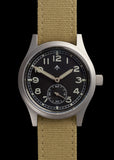
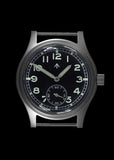
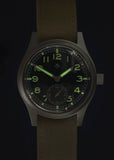
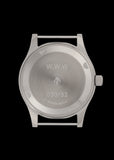







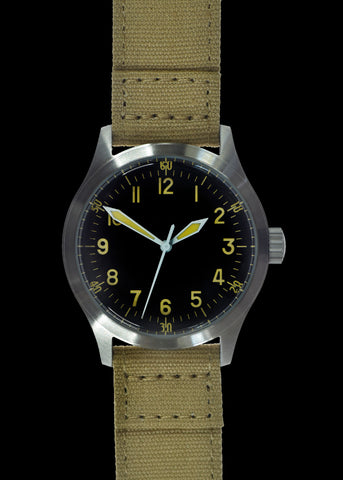
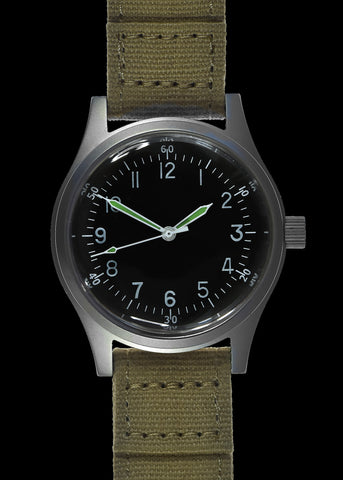


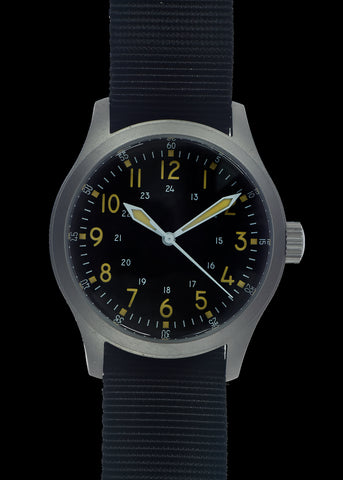





Connect